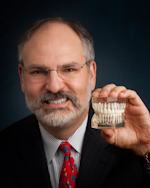I am very excited about being asked to write this monthly column. What a great opportunity to share things that I have learned over 41 years of practice. I am not suggesting for a moment that I have all the answers, but I have had amazing mentors, teachers, and great dental friends. There is another important aspect that we all know: Experience is a great teacher.
The goal of this column is to help create a dialogue with one another, and most of all with yourself. The first question you need to ask yourself is: What are my practice goals? If you know your goals, then it is possible to create a road map to get there.Practice Building 101
Starting with the basics in college, you had a core curriculum and then moved forward into your major. We all have completed our major—dentistry. But what do you want from dentistry? Do you want a fee-for-service practice or one that is completely insurance based? Do you want to provide extractions, pedodontics, and root canals, or would you like to eliminate these? Whatever the path, there is a basic road map that will get you there, and it works for everyone. It's called Practice Building 101.
Also by Jeffrey C. Hoos, DMD:
Can the introverted dentist be successful?
When a patient enters your dental world, what do they expect from you? Whether they sit down in your chair for the first time or the 100th time, they believe that you know exactly what you are doing, or they would not even enter your office. We all have different levels of training and experience, but the patient doesn’t know if this is your 10th implant placement or your 1,000th implant placement … unless you share that information with them.
Balance: a three-legged stool
I believe that the success of dentistry is assured when the dentist truly understands that they must maintain a balance between three major components.
- Art: Doing beautiful dentistry
- Science: Using materials and methods based on evidence
- Business: Running your practice on sound principles
Balance: the art, science, and business of dentistry is like sitting on a three-legged stool. You must have even legs on the stool, or it will tip over.
The first building block of success: Your mission statement
How do you acquire these building blocks? Always think with the end in mind. What is the outcome you are trying to achieve, or what is your ultimate goal? Many things depend on your time frame. It may seem overwhelming and impossible. But how do you eat an elephant? One bite at a time!
So, what is the first step? I can't overemphasize the importance of a mission statement. Whether it is simple or complex, everyone around you, including your spouse and staff, must know your mission statement, and it must be written down. If it is not, then it cannot be shared or acted on.
I have wanted to be a dentist from the age of five. Sounds impossible, but it's true. I was traumatized by one dentist and then saved by another who became my role model of patient care. I wanted to be like him, and my path was clear—I would have done anything to become a dentist.
I met Betsy, an amazing person who became my girlfriend and then my wife. She understood my goal, supported me, and would not allow me to diverge from my path. There were some dark days, and without her at my side, it would not have happened. I became a dentist, and together we created a mission statement that I have lived by for 41 years. Betsy is not a dentist, but she has worked with me to create our lives together.
You must know where you want your practice to go and on what principles it is based. If you do not have a mission statement, create it as the first building block of Practice Building 101. If you can't come up with one, steal mine: To provide the highest quality of care, for the greatest number of patients, while maintaining a balance: art, science, and business of dentistry.
So there you have it, Practice Building 101, and here is the first challenge I'm giving you: Know where you want to go by creating a mission statement.
Have a productive and successful month while maintaining that balance: art, science, and business of dentistry.
Editor's note: This article appeared in the January 2022 print edition of Dental Economics magazine. Dentists in North America are eligible for a complimentary print subscription. Sign up here.








